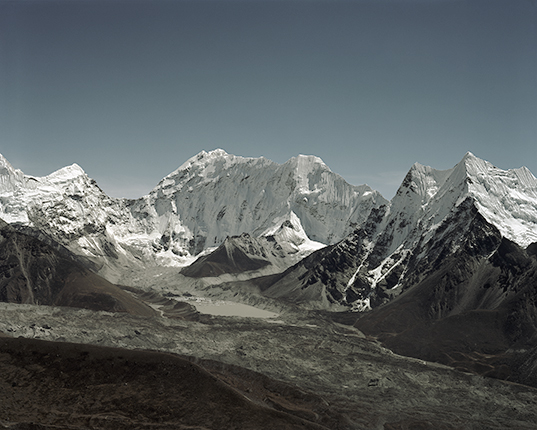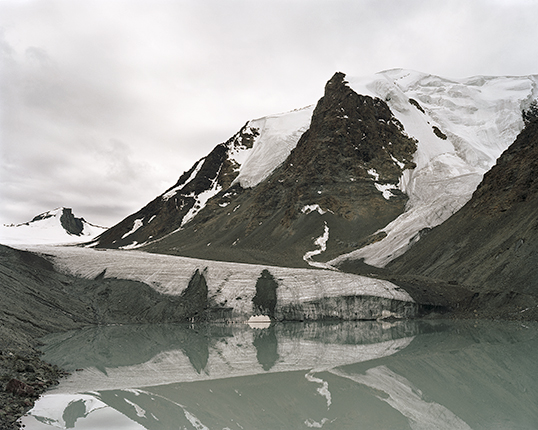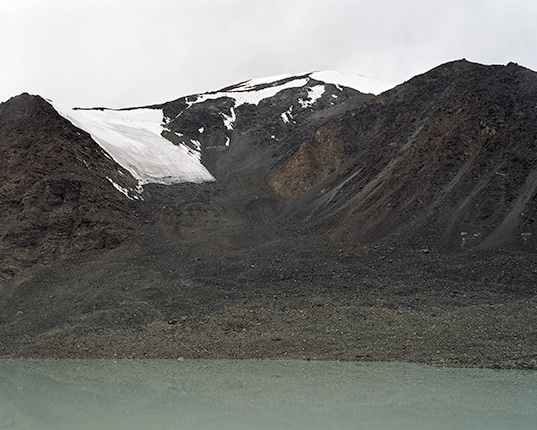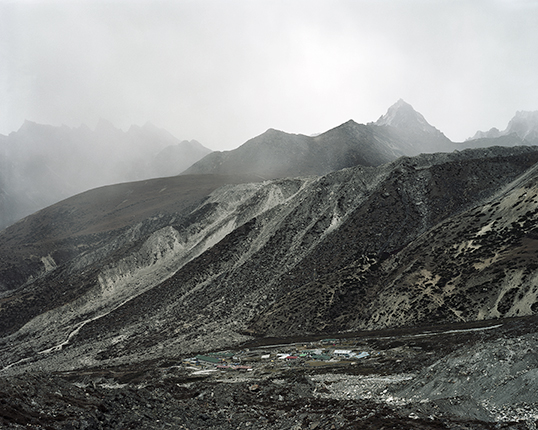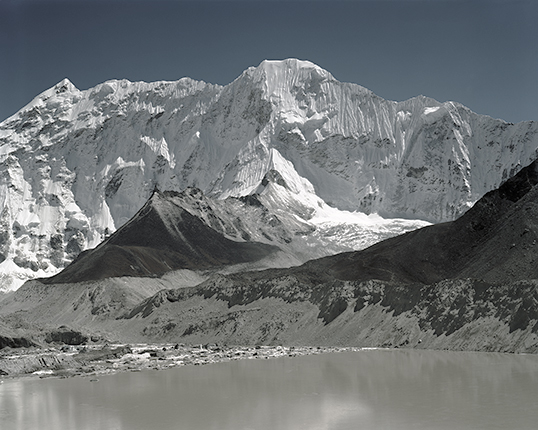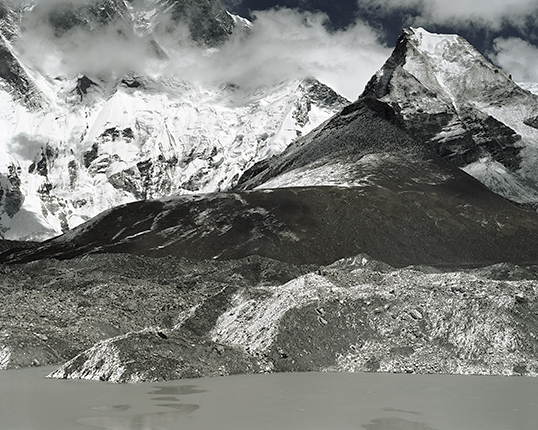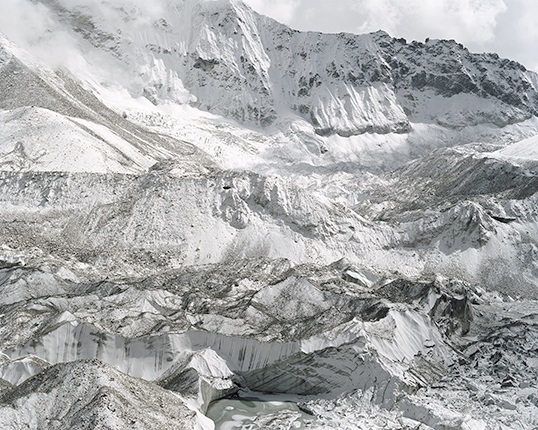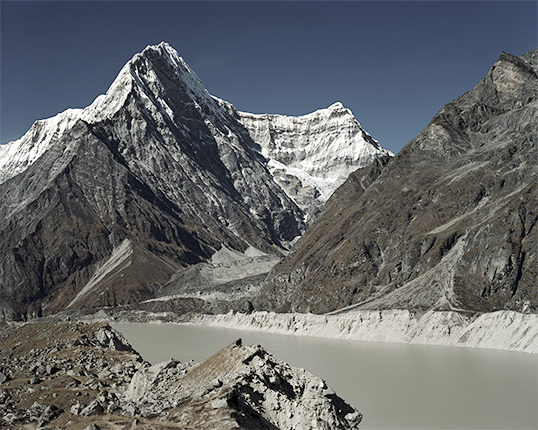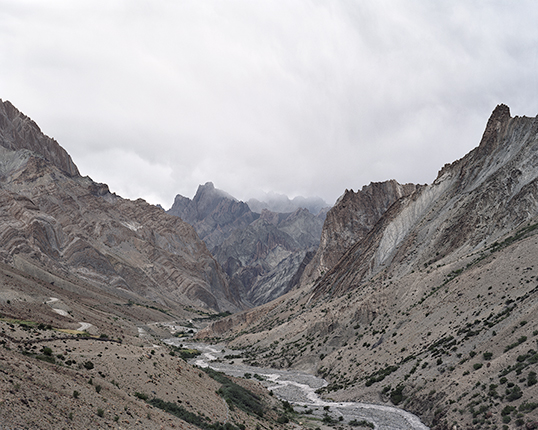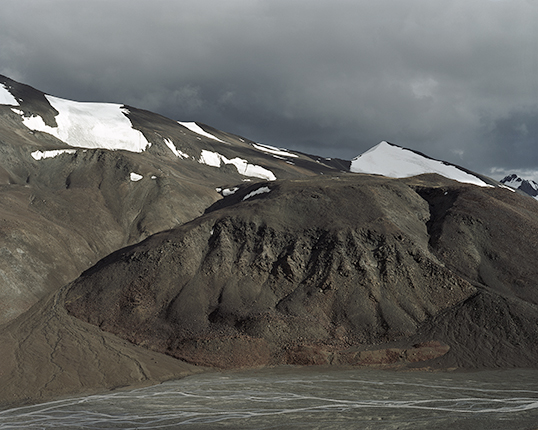The Himalayan mountain region in Nepal and North India, despite its unparalleled size, is one of the most fragile ecosystems on Earth. These seemingly indestructible mountains are actually the most vulnerable to climate change and global warming. Even small increases in temperature are magnified here because of the high altitude, and the impact of this is already being seen. Many of the 3200 glaciers in this Himalayan region are melting, and in some cases disappearing faster than those in other mountain ranges in the world. This is leading to the formation of dangerous glacial lakes, dangerous because the water threatens to breach natural dams and destroy human life, property and infrastructure over vast areas downstream.
The When The Wave Comes From The Mountain series explores and documents three such dangerous lakes; Imja Tsho, Spong Togpo, Tsho Rolpa and the changing landscape of the Himalayan region in Nepal and India. The project is partly inspired by photographs taken of this region in the late 1800s by Italian mountaineer and photographer, Vittorio Sella, whose work captured a moment in history when the landscape was virtually undisturbed.
While trekking to the lakes, I talked with lots of people who live and work on the land, namely the Sherpas, an ethnic group from the mountain regions of Nepal. They are experts in this natural environment and have an intimate knowledge of the landscape. “The mountains are not well,” they told me. They have noticed significant changes in the weather over the last two years: less snow in the winter, flurries of snow at times of the year when it would not be expected and live in constant fear of these lakes. “The seasons have changed so much and we don’t understand why.”
The Sherpas may not understand why the seasons have changed and the glaciers are disappearing right before their eyes, but science provides very clear evidence of what is happening and, more importantly, why. Over the last hundred years, the world’s climate system has changed quickly and substantially, a rise in global temperature being the most significant and alarming development. The recent United Nations IPPC report published in September 2013 states the findings prove that human influence through the burning of fossil fuels, has been the dominant cause of the global warming observed since the 1950s. Thanks to the high altitude in the mountain regions of Nepal and India, the rate of warming in these areas is higher than the global average.
Glaciers and the lakes that form when they melt are perhaps among the best natural barometers and predictors of the consequences of global climate change. With many glacial lakes increasing in size at a rapid rate, scientists are continually monitoring and studying them. They say a number are unstable and pose a severe threat to those living in the valleys below. In Nepal and India there are 1717 glacial lakes of which 33 are categorised as being in a potentially critical state. The area of particular concern is the natural Moraine Dam. It is made up of earth, debris and boulders, which can become unstable when vast volumes of water drain into the lakes. This in turn increases the chance of a glacial lake outburst flood (GLOF), a huge wave like a tsunami coming down from the mountain. Over recent decades there have been 14 GLOF events recorded in Nepal.
Photographing the three glacial lakes was an intense and emotional experience for me. So many thoughts passed through my mind as I worked to capture the landscape. The only moment of real clarity and peace I found was under the dark cloth, looking through the viewfinder of my large format camera. This was the place where I felt most connected with the landscape and best able to understand the truth of what was happening to it.
Each lake has a different personality, which in turn created unique feelings and a distinct response from me. This is reflected in the work, with the photographs for each of the three lakes having a different aesthetic. As I photographed the lakes, I was struck not only by their beauty, but also by the ugliness that had created them, and the utter devastation they could cause if they burst.
Behind the beauty of the mountains and glaciers of Himalaya region, there lies a much darker truth – the roof of the world has become decidedly unstable, thanks to decades of negative human intervention. I believe what is happening to the Himalayas is an important wake-up call to the impact of global climate change, it is for this reason that I’ve created this series of photographs.

